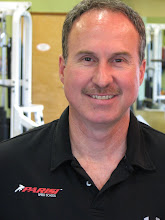How a Soccer Player Can Get Faster Feet
Getting your feet to move faster for a soccer player, as you can imagine, is pretty important. It allows them to be more dangerous offensively on the field, but it can also help mitigate injuries to themselves by getting out of the way of sliding tackles.
Here are several skills to develop and also several drills to do to help any soccer player get faster feet and increase their speed.
Ground Contact: The quicker your feet are, that usually means that the less time the foot is in contact with the ground. The less ground contact the better. It also probably means the soccer player is landing on the front part of their foot which produces the best results.
Arm Drive: The faster a soccer player moves or pumps their arms. the faster their feet will go as well. You can try it by just jogging in place, then start to pump your faster, and then as fast as you can and watch what happens to your feet....they get really fast too.
One drill I like to have all my soccer players do everyday is called, appropriately enough, "Fast Feet"! To do this exercise, a soccer player stands up nice and tall, with their hands open and relaxed and arms at a 90 degree angle. The player starts to pump their arms quickly by flicking their hands back and forth (envision swiping the side of their shorts). The soccer player then moves their feet forward quickly as they take little steps (about 6-8 inch steps) moving themselves forward. A player should go like this for 10 yards. They should repeat this exercise 2-3 times.
A progression for this exercise is to have them go 5 yards in fast feet mode and then start to gradually open up their stride length, all the while keeping their arms moving quickly and their legs too until they have opened their stride length up and they are running at top speed.
Another drill that I like that works very well also is simply doing fast feet in place for a short period of time (like 5-6 seconds). Have the soccer player count the number of times their feet touch the ground during this period of fast feet. The next time, they should try and beat this mark. This personal challenge forces a player to maximize their potential each and every time. A player can chart their progress and they will see how their feet will get faster and faster very quickly.
While doing this exercise, it is important to maintain good running form as well.
I hope this helps all soccer players get faster feet and increase their speed on the soccer field.
Have great day!
Gary
www.soccerandspeedcoach.com
Labels: fast feet, soccer speed

